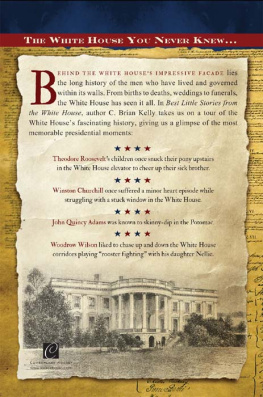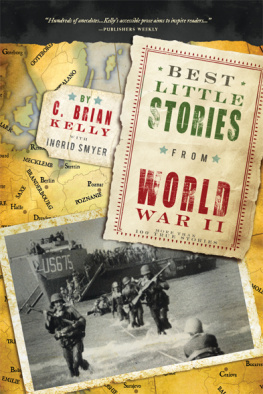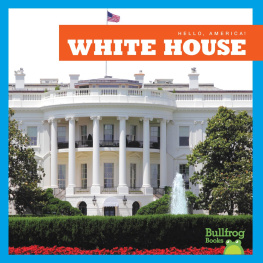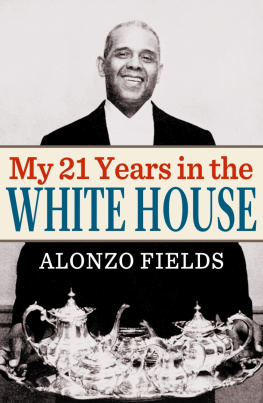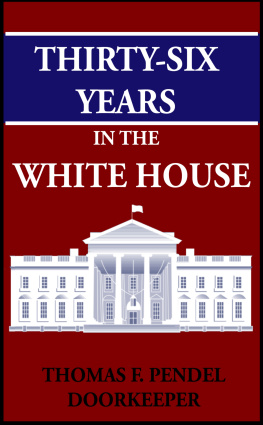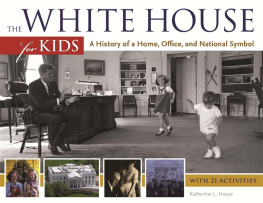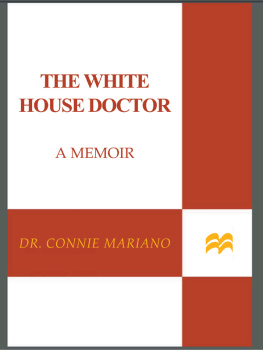
Copyright 2005, 2012 by C. Brian Kelly and Ingrid Smyer-Kelly
Cover and internal design 2012 by Sourcebooks, Inc.
Series design by The Book Designers
Cover images Americanspirit/dreamstime.com, Vacclav/Dreamstime.com, stocksnapper/123RF
Sourcebooks and the colophon are registered trademarks of Sourcebooks, Inc.
All rights reserved. No part of this book may be reproduced in any form or by any electronic or mechanical means including information storage and retrieval systemsexcept in the case of brief quotations embodied in critical articles or reviewswithout permission in writing from its publisher, Sourcebooks, Inc.
This publication is designed to provide accurate and authoritative information in regard to the subject matter covered. It is sold with the understanding that the publisher is not engaged in rendering legal, accounting, or other professional service. If legal advice or other expert assistance is required, the services of a competent professional person should be sought.From a Declaration of Principles Jointly Adopted by a Committee of the American Bar Association and a Committee of Publishers and Associations
All brand names and product names used in this book are trademarks, registered trademarks, or trade names of their respective holders. Sourcebooks, Inc. is not associated with any product or vendor in this book.
Published by Cumberland House, an imprint of Sourcebooks, Inc.
P.O. Box 4410, Naperville, Illinois 60567-4410
(630) 961-3900
Fax: (630) 961-2168
www.sourcebooks.com
Library of Congress Cataloging-in-Publication Data
Kelly, C. Brian.
Best little stories from the White House: more than 100 true stories / C. Brian Kelly.
With First Ladies in review / by Ingrid Smyer.
Includes bibliographical references and index.
(trade paper: alk. paper)
1. White House (Washington, D.C.)Anecdotes. 2. PresidentsUnited StatesAnecdotes. 3. Presidents spousesUnited StatesAnecdotes. I. Smyer-Kelly, Ingrid, 1927-First Ladies in review II. Title.
F204.W5K45 2012
975.3dc23
2012017062
Printed and bound in the United States of America.
VP 10 9 8 7 6 5 4 3 2 1

Imposing but stark-looking in wintertime was the Presidents House of the 1840s, still the largest home built in America. By the time John Plumbe (18091857) took this daguerreotype of the Executive Mansions south side, circa 1846, Thomas Jefferson, Dolley Madison, the British, and Andrew Jackson, among others, had come and gone. Question: Is there any sign here of the famous Jackson Magnolia? See "A Most Famous Tree." (American Memory Collections, Library of Congress)
For our mothers,
Claire and Ingrid
Contents
Prologue:
White House Under the Gun
2001
WHEN TERRORISTS TOOK DOWN THE World Trade Center on Sept. 11, 2001, and even more hijacked airliners still could be headed for the White House itself, President George W. Bush wasnt home in Washington, D.C., but Vice President Dick Cheney was. He had hardly learned of the horrifying events in New York City before a Secret Service agent burst into his office in the West Wing, took hold of him and, without ceremony, propelled him out of his office and down the hallway.
Special Agent Jimmy Scott rushed Cheney to a stairway leading to the Presidential Emergency Operations Center (PEOC), a strictly functional bunker below the wedding-cake facades of the Executive Mansion.
It was a moment Cheney never would forget.
We stopped at the bottom of the stairs in a tunnel outside the PEOC, Cheney related in his 2011 book In My Time (written with his daughter Liz Cheney). I watched as Secret Service agents positioned themselves at the top, middle, and bottom of the staircase, creating layers of defense in case the White House itself should be invaded.
The White House was safe, but in the next few minutes, Cheney would learn of at least one hijacked airliner that appeared to be on a direct path to the White House. Just then, Cheney would be cut off from communication with President Bush. As a result, it fell to him as the highest available authority in the U.S. government to order the Air Force to shoot down the airliner if it clearly did become a threat.
Agent Scott, already handing out guns, gas masks and flashlights to the personnel gathered in the underground shelter, explained that Hed gotten word over his radio that an inbound, unidentified aircraft was headed for Crown, code name for the White House.
And minutes later, a heart-stopping follow-up: Sir, Scott said, the plane headed for us just hit the Pentagon.
On hearing that grim news, Cheney knew for certain that Washington itself was under attack. President Bush, who had been visiting an elementary school in Florida, must stay away.
With reports of other airliner hijackings still unresolved, the White House and everybody in itor below itwere still under the gun
Cheney finally reached Bush to tell him he should stay away. Actually, it was Cheneys second call to the president since two hijacked airliners flew into the World Trade Centers twin towers about 9 oclock that Tuesday morning. Unaccountably, a communications glitch had interrupted Cheneys first call to Bush, thus cutting off a vital communications link between the two leaders of the most powerful nation in the world. For a time, each was trying to reach the other.
Waiting for his latest call to go through, Cheney had watched the dire scene unfolding in New York on an old television set that had been set up on the tunnel.
Finally, Bush came on the line. I told him the Pentagon had been hit and urged him to stay away from Washington. The city was under attack, and the White House was a target. I understood that he didnt want to appear to be on the run, but he shouldnt be here until we knew more about what was going on.
Meanwhile, Cheneys wife Lynne appeared in the tunnel. It now was shortly before 10 oclock. She had been in downtown Washington when the World Trade Center was struck. Her Secret Service detail brought her to the White House.
As the vice president wound up his conversation with Bush, he and his wife went on into the wood-paneled PEOC proper. There, he sat at a conference table loaded with telephones in drawers underneath the tabletop. On the wall across from me were two large television screens and a camera for video-conferencing. A side wall contained another video camera and two TV screens. The wall behind me was blank except for a large presidential seal.
All too soon the television screens showed the collapse of the South Tower at the World Trade Center. Both Lynne and I knew we had just watched hundreds, maybe thousands, of innocent people die. Still unresolved, of course, were unconfirmed reports of more airliner hijackings by the terrorists.
Transportation Secretary Norm Mineta, also sequestered in the underground bunker by now, was making lists of airline flight numbers, trying to figure out which planes were confirmed hijacked and crashed, and which might still be threatening us in the air.
Using two phones, Secretary Mineta was in touch with both the FAA (Federal Aviation Administration) and his chief of staff, trying to get the skies cleared until we knew just what we were dealing with. In this emergency, no pilot discretion on if and when to land would be tolerated. I heard him say in no uncertain terms that pilot discretion would not be the rule today.
Next page
